- Qualcomm Launches Snapdragon 4 Gen 2 Mobile Platform
- AMD Launches Ryzen PRO 7000 Series Mobile & Desktop Platform
- Intel Launches Sleek Single-Slot Arc Pro A60 Workstation Graphics Card
- NVIDIA Announces Latest Ada Lovelace Additions: GeForce RTX 4060 Ti & RTX 4060
- Maxon Redshift With AMD Radeon GPU Rendering Support Now Available
Radeon Pro vs. Quadro: A Fresh Look At Workstation GPU Performance

There hasn’t been a great deal of movement on the ProViz side of the graphics card market in recent months, so now seems like a great time to get up to speed on the current performance outlook. Equipped with 12 GPUs, one multi-GPU config, current drivers, and a gauntlet of tests, let’s find out which cards deserve your attention.
Page 7 – Gaming: UL 3DMark, VRMark, Unigine Superposition
Gaming performance is generally not a big focus for professional GPU lineups, but the fact of the matter is, they can game. That especially applies to the top-tier cards, as they usually perform pretty much identically to their gaming series brethren.
On the AMD side, Radeon Pro users can opt to use a Radeon Adrenaline gaming driver in addition to the standard RPro driver, which means that any gaming optimizations the company delivers to Radeon should also apply on Radeon Pro – as long as you are using the gaming driver at the time. However, that driver doesn’t seem to get updated too often; as of the time of writing, the most recent update was from December.
To my knowledge, NVIDIA’s professional drivers do not include the same per-title optimizations like GeForces do, so some performance might be lacking, but not too much.
The GeForce, TITAN, and Radeon cards in this lineup used their respective gaming drivers, while the professional cards were tested using their primary drivers (eg: Enterprise for Radeon Pro, and the latest WHQL for Quadro).
To get a quick gauge on the performance of our workstation GPU collection in gaming, we use UL’s (formally Futuremark’s) 3DMark and Unigine’s Superposition.
UL’s 3DMark & VRMark
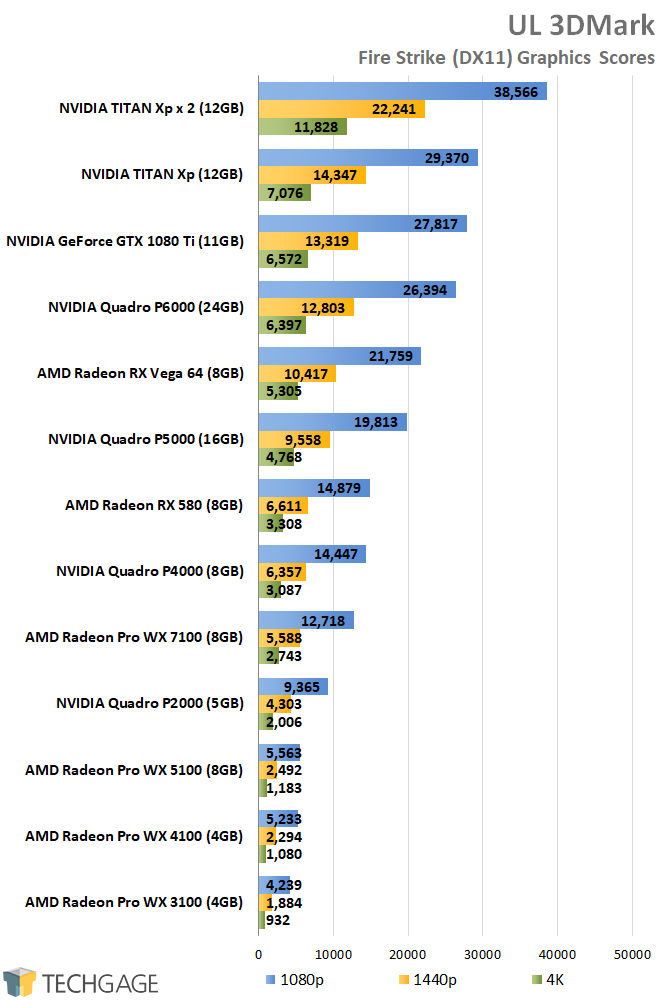
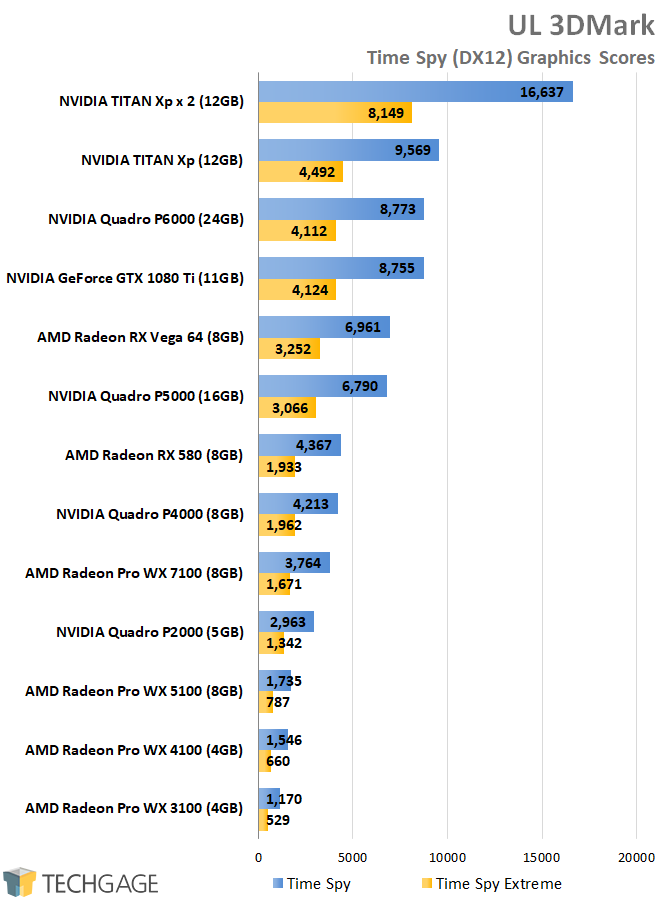
Multi-GPU scaling isn’t perfect in every game, but when extra horsepower is properly taken advantage of, it can result in some very obvious gains. For single GPU, the TITAN Xp dominates, to be expected when you compare its spec sheet to the others. The 1080 Ti falls not too far behind that, but it keeps a fair distance ahead of the Vega 64.
Quadro doesn’t game better than GeForce, so these results expectedly scale. Well, for the most part. In the DX12 Time Spy test, the P6000 and 1080 Ti become equal, despite the Ti outperforming the P6000 in the DX11 Fire Strike test.
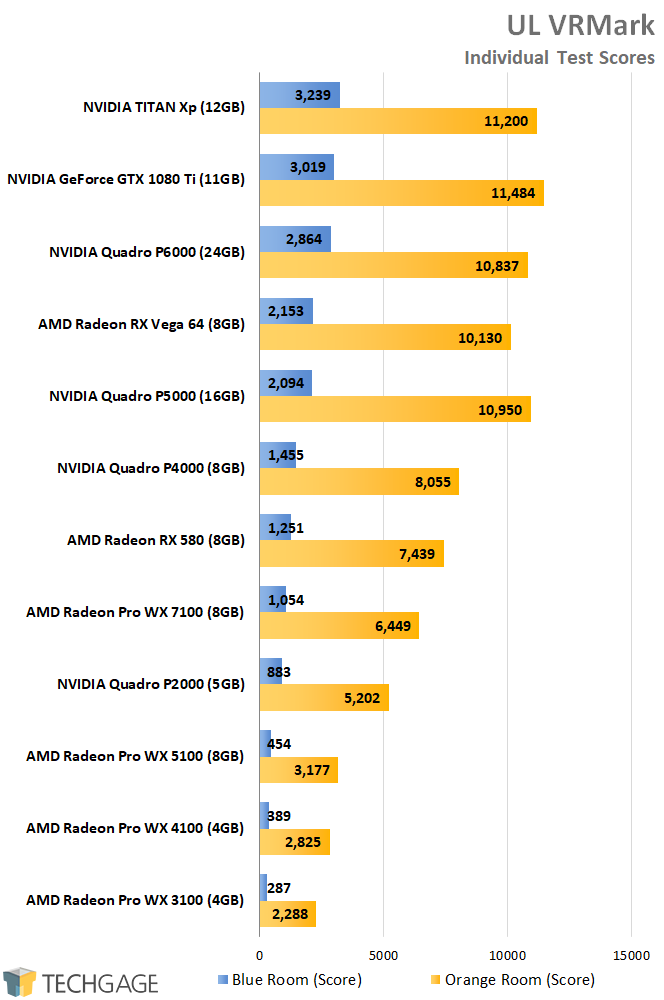
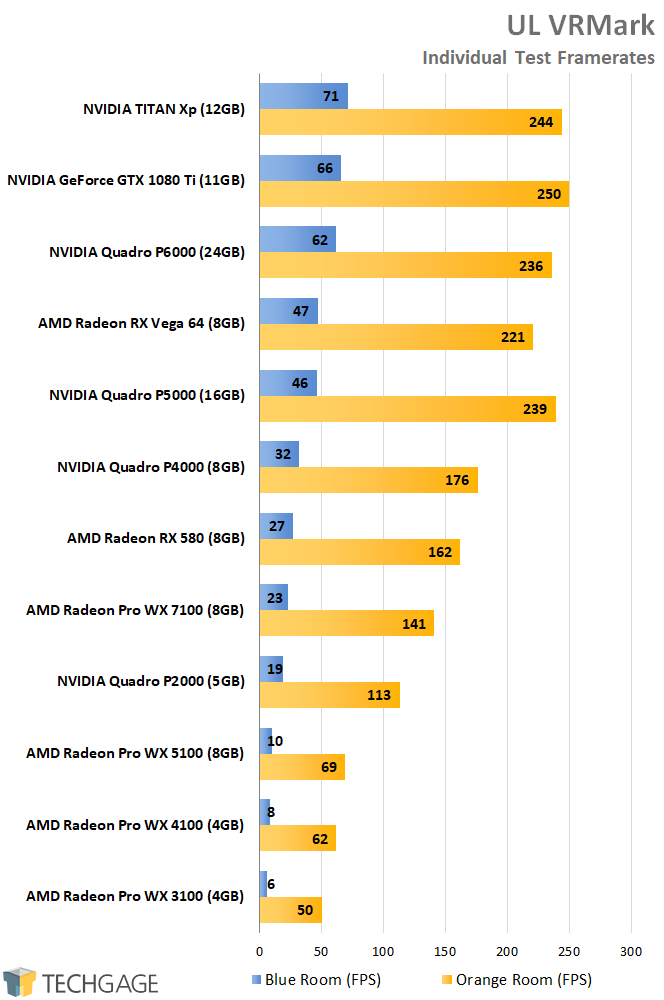
Note: These results are explicitly gaming-related, and do not represent the performance of virtual reality in enterprise applications.
VRMark’s Orange test represents the current state of VR, or perhaps where it was one year ago. Every GPU above the Vega 64 and P5000 will deliver great VR performance for current content, while the P4000 and RX 580 cut it close. No current GPU delivers suitable performance for the forward-looking Blue test.
Because multi-GPU for VR is virtually (heh) non-existent right now, not even VRMark will take advantage of the extra horsepower (which is why the SLI result is suddenly absent).
Unigine Superposition
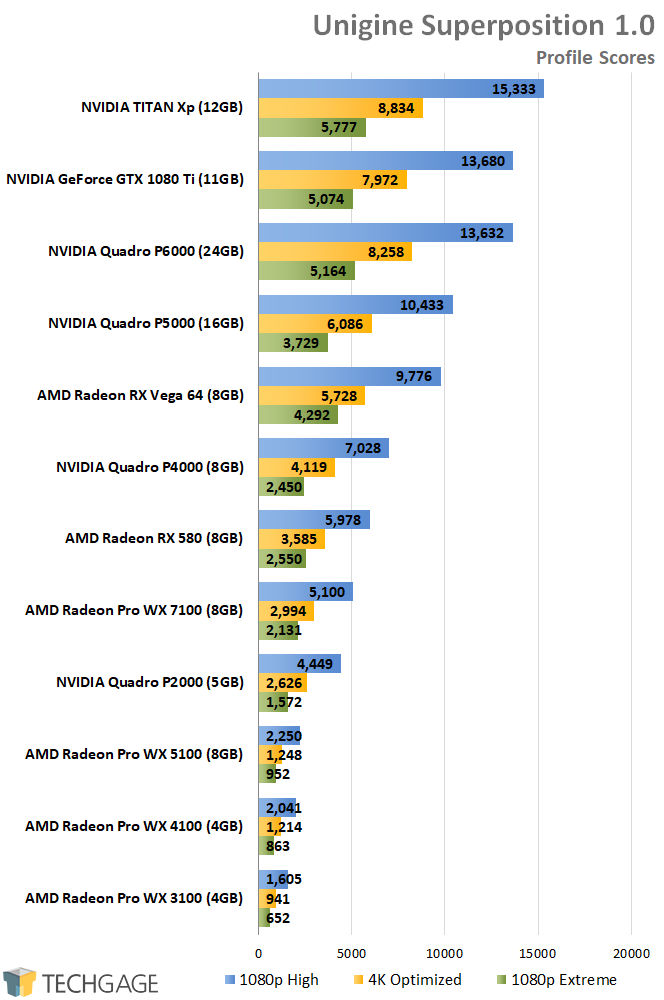
Like VRMark, Superposition looks stunning, but it fails to support multiple graphics cards. We still have at least one interesting result, though, in that the P5000 outperforms the Vega 64 in all but the heaviest test. This is a GTX 1080-equivalent card, but with more modest clocks, but still performs great in comparison to its GeForce sibling.
Support our efforts! With ad revenue at an all-time low for written websites, we're relying more than ever on reader support to help us continue putting so much effort into this type of content. You can support us by becoming a Patron, or by using our Amazon shopping affiliate links listed through our articles. Thanks for your support!







